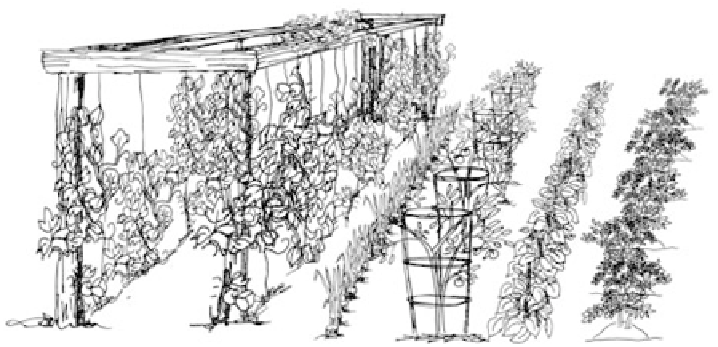Agriculture Reference
In-Depth Information
Carrot family.
These include carrots, celery, cilantro, parsley, dill, and fennel plants. These plants
usually attract a large number of pollinators to the garden, benefiting the production of other
crops.
Spinach family.
This family is sometimes called the goosefoot family, and it includes beets, spinach,
chard, and quinoa. These are lighter feeders and can follow one of the heavy-feeding families of
plants.
Legume or pea family.
These plants include peas, beans, lentils, and peanuts and are considered
beneficial plants for the soil. Legumes help build up nitrogen in the soil and can be planted before
heavy feeders in the crop rotation.
Corn or grass family.
The grass family of plants includes corn, wheat, oats, and rye crops, although
most backyard farmers are most familiar with growing corn. Tradition says to plant corn ahead of
potatoes for the best potato harvest.
Crop rotation is relatively easy when you have a basic plan or guideline. The following two
diagrams show how someone might rotate their growing spaces. You'll see that the plan is very
customizable depending on what types of vegetables and herbs you grow, and how much you grow.
Notice in the first figure that follows that our family has entire rows dedicated to tomatoes. We
treat them like a family of their own in our rotation cycle.
Cucumbers, onions, tomatoes, beans, and potatoes in a small garden area the first year.
(Illustration by Becky Bayne)













